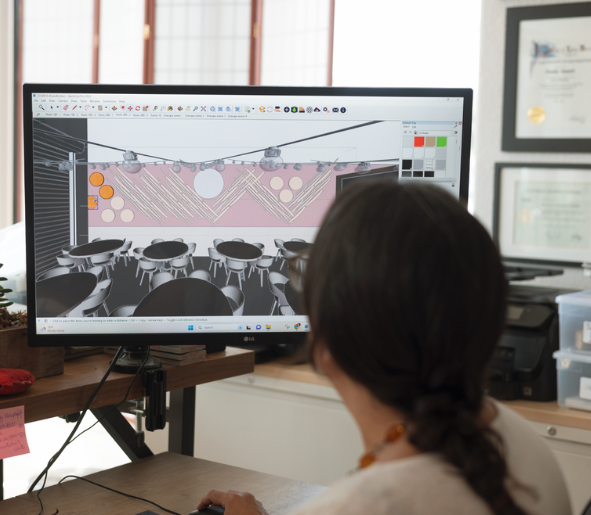The Design Process: Design Development
Here we are developing the inside of a restaurant!
We’ve talked about Pre-Design and Programming, as well as Schematic Design. It’s now time to delve into Design Development. This is the stage in the architectural process where concepts and ideas take shape and evolve into tangible designs. It is the stage where the initial design concept is refined and transformed into a comprehensive solution that meets the functional, aesthetic, and technical requirements of a project. Regular design reviews and evaluations can help in identifying design issues early on and making necessary adjustments.
Managing challenges in Design Development Design development can be a complex process that requires careful consideration of multiple factors. Some of the common challenges faced in design development include:
Balancing aesthetics and functionality
Architects need to strike a delicate balance between aesthetics and functionality in design development. While aesthetics play a large role in creating visually appealing spaces, functionality is equally important to ensure that the design meets the intended use, as well as taking the project budget into account. Structural systems, utility types and connections, and exterior finish materials all take a center stage here. An experienced architect will take careful consideration of various design elements, such as spatial arrangements, circulation, materials, and details.
Technical complexities
This includes structural requirements, building codes, and sustainability considerations. Architects need to work closely with engineers, consultants, and other stakeholders to ensure that the design meets all the necessary technical requirements and regulations. This may involve working through issues related to structural integrity, energy efficiency, and local planning code compliance
Sustainability considerations: Design development is an opportunity to incorporate sustainable design principles. Pretty Smart is a California Green Business, so we implement sustainability wherever we are able to in our designs.
A well-executed Design Development phase not only captures the essence of the project but also considers practicality and the client needs. At the end of this phase, we have a three dimensional, realistic design solution which has addressed all code compliance, structural and client needs. It lays the groundwork for the realization of a successful, cohesive architectural design. The next and second to last step is Permit Documents!

